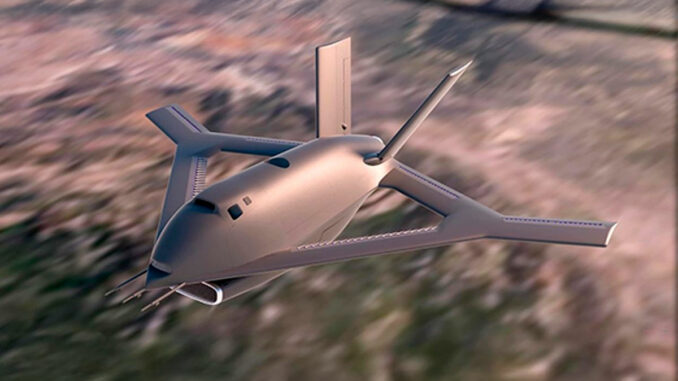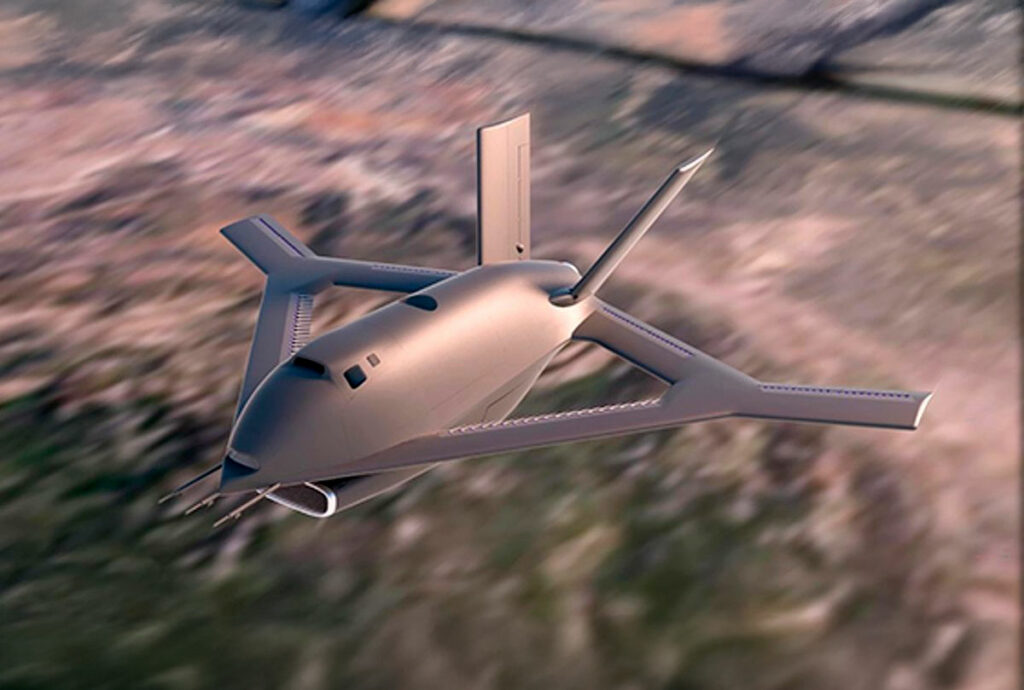
The X-65 Aurora, a UAV without moving control surfaces, marks a technological breakthrough in stealth and structural simplification for military aviation.
The X-65 Aurora is a military UAV that redefines standards in stealth and aeronautical engineering. Designed without moving control surfaces, it uses pressurized air jets to direct the flow of air over its structure. This concept, based on Active Flow Control (AFC), reduces the weight and complexity of the aircraft while enhancing its stealth capabilities. By eliminating external parts, the X-65 becomes virtually undetectable by radar, offering a crucial strategic asset for military missions.
Innovative X-65 Aurora design: no moving control surfaces
The X-65 Aurora marks a turning point in military aeronautics with an innovative approach to stealth design. Unlike traditional aircraft, the X-65 has no moving control surfaces such as ailerons or rudders. Instead, it uses pressurized air jets from an Active Flow Control (AFC) system, a concept that modifies the airflow around the aircraft without the need for external moving components. This technology reduces the overall weight of the aircraft, while minimizing the risk of radar detection.
Conventional military aircraft are equipped with control surfaces that require complex, heavy mechanisms. Eliminating these surfaces in the X-65 Aurora not only simplifies the structure, but also reduces maintenance costs, as moving components are often subject to wear and tear and failure. Weight reduction also contributes to lower fuel consumption, improving aircraft autonomy and mission range.

The stealth benefits of active flow control
The AFC system is a major advance for stealth UAVs. By using jets of air to steer the aircraft, the X-65 Aurora avoids the radar signatures associated with conventional control surfaces. The moving surfaces of an aircraft are often the first area detectable by radar, as they generate radar returns that enable the aircraft to be tracked. With the X-65, designers have eliminated this weak point, making the drone virtually undetectable by conventional radar.
The pressurized air-jet system enables airflow to be precisely manipulated to suit flight requirements. For example, during a sharp turn or altitude adjustment, the X-65 can generate targeted thrust using the AFC to control the aircraft without external surfaces. This type of dynamic stealth is essential for reconnaissance and surveillance missions in heavily guarded areas, as it minimizes the chance of detection and increases the possibility of infiltration.
Economic and logistical implications of the X-65 Aurora design
The X-65 Aurora’s simplified architecture offers significant cost and maintenance advantages for military forces. Moving surfaces and their control mechanisms account for a significant proportion of maintenance costs on conventional aircraft. By dispensing with these components, the X-65 reduces production and maintenance costs, offering a more cost-effective solution in the long term. In addition, the reduction in the number of moving parts reduces the frequency of inspections, thus lowering the overall cost of ownership for militaries.
The absence of moving parts also increases the drone’s operational reliability. Moving parts are often prone to mechanical failure, particularly in demanding environments such as extreme weather conditions or extended missions. The X-65, with its fixed design and AFC-based control, can operate continuously with less risk of failure, a crucial advantage for long-duration missions or in hostile territory.
Strategic implications for military operations and future prospects
The X-65 Aurora’s advanced stealth gives military forces a strategic advantage. Its ability to evade radar enables it to operate in enemy zones undetected, which is essential for reconnaissance, intelligence and even deep strike missions. By making the aircraft virtually invisible to radar, the X-65’s designers are meeting the growing needs of modern armed forces for drones capable of penetrating enemy defenses.
In the future, the X-65 Aurora could pave the way for a new generation of stealth UAVs, using AFC as standard technology. This development marks a break with conventional military aircraft design, and highlights the quest for optimized stealth at lower cost. The potential of this technology could also inspire other innovations in civil aviation, particularly in aircraft requiring low noise and radar signatures.
So the X-65 Aurora is much more than just a military drone; it represents a technical breakthrough in radar signature reduction and structural simplification, offering a stealthy, efficient solution for tomorrow’s military missions. Armed forces around the world will certainly be watching its development, as the integration of active flow control could transform stealth and air defense strategies for decades to come.
War Wings Daily is an independant magazine.